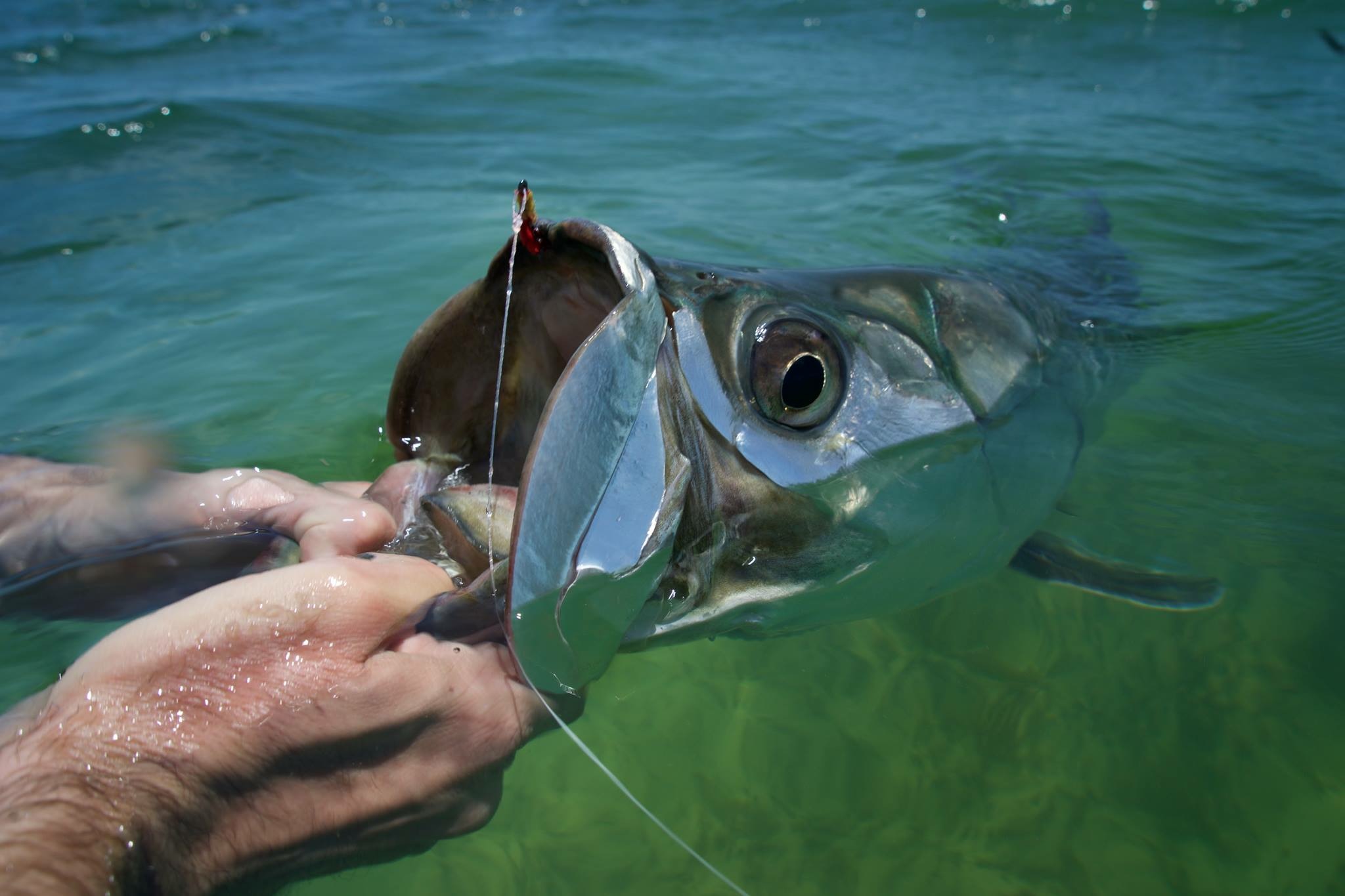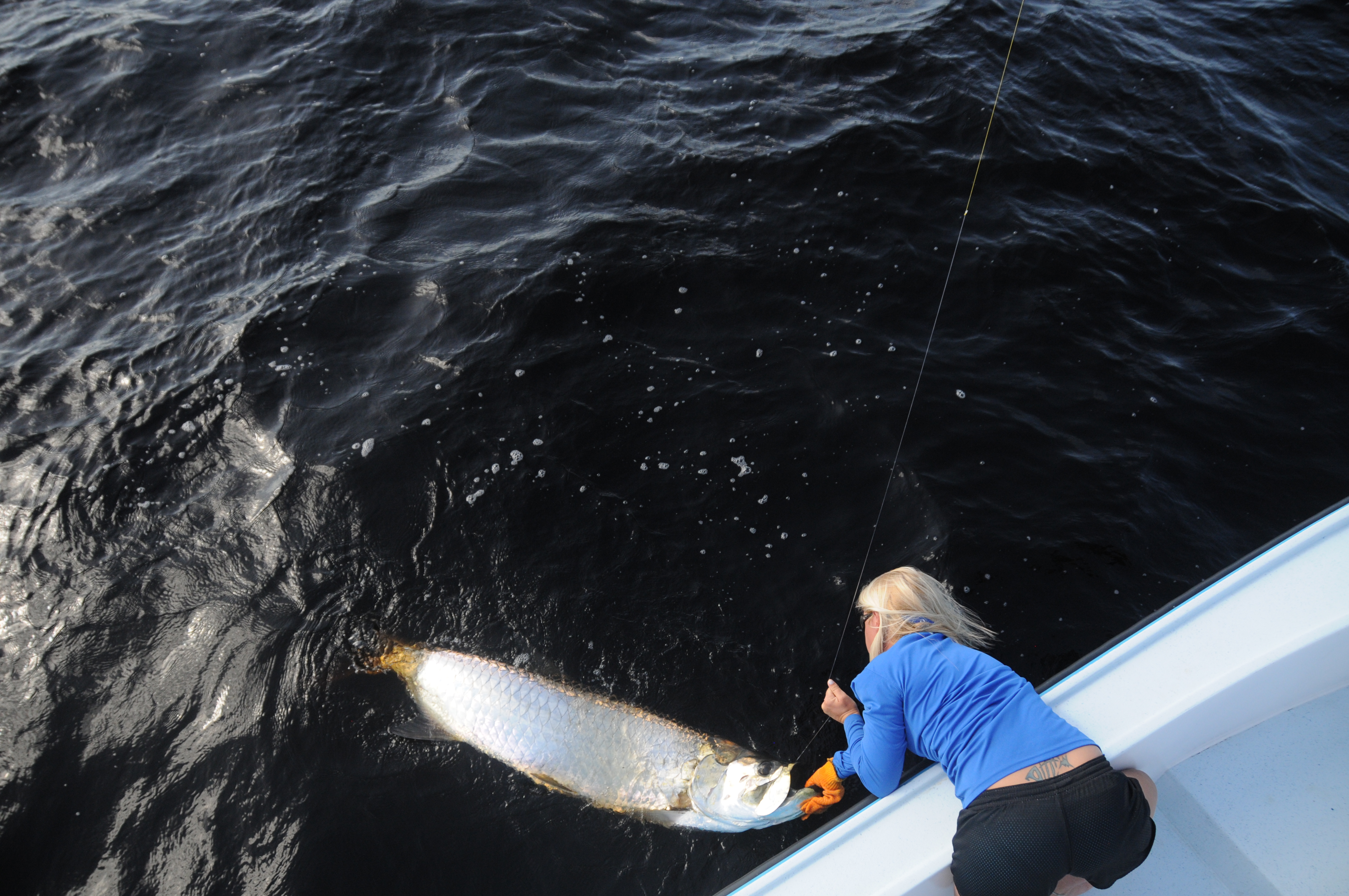
This time of year, the snowbirds are beginning their migration north and the tarpon are moving in. Typically, we see large schools of tarpon moving in on the Gulf coast as the weather begins to warm. Since we’ve been having such mild winters, these schools have been showing up earlier and earlier. Once they arrive in our waters, adult tarpon form large aggregations along the beaches and near the passes where they gear up for spawning. One phenomenon – known by anglers as “daisy chaining” – occurs when dozens of tarpon form circular head-to-tail formations, while anglers pitch crabs or their best fly pattern into the ring. This is believed to be a pre-spawning behavior that gets them revved up before the spawn.
This is also the time of year when anglers tend to see the largest tarpon, exceeding 100 pounds. Since a female can carry millions of eggs, and the bigger she is the more eggs she can hold, it is thought that larger tarpon are females. This hasn’t been examined scientifically, however. Tarpon are relatively late bloomers when compared to other estuarine fishes and don’t reach sexual maturity until 8-10 years old. And since they are also capable of living a long time – up to 80 years – negative impacts to young tarpon, such as habitat loss and degradation, will affect the adult fishery for decades.

The tarpon that have collected, along the beaches and in the passes, move offshore to spawn near the full and new moons in early summer. So, a pass that was full of tarpon one day might be empty the next because the tarpon are offshore spawning. The first full moon in June is typically one of the top spawning moons, and anglers know that just prior to tarpon moving offshore to spawn, and just after they return, the bite is on. However, not every tarpon will head offshore to spawn for a new or full moon because they may have already spawned or remain inshore to feed, to build up more reproductive material for a future spawn.
Once offshore, tarpon release their sperm and eggs into the open water – known as broadcast spawning. The eggs are only viable and buoyant in salty water, so if a female tarpon happens to release her eggs in freshwater they won’t be viable. The broadcast eggs and sperm come together in the water column, where only a fraction of the eggs are fertilized and hatch into larvae known as leptocephalus.
Numerous scientific studies have provided information that show tarpon spawn offshore. First, tarpon larvae that are only a day or two old have been collected offshore by scientists sampling plankton. They then use data on ocean currents to determine from where that larvae drifted in one or two days. This reveals the spawning location. Tracking of adult tarpon by satellite tags has revealed offshore movements on new and full moons. These tarpon have made dives to >300 feet, followed by rapid ascents to the surface. We think that this is when they release the eggs and sperm. Bonefish, which are closely related to tarpon, have a similar offshore spawning strategy that includes a deep dive followed by a rapid ascent. Scientists think the rapid change in pressure during the ascent toward the surface helps the females expel their eggs.

Sadly, one of the likely spawning locations that has been identified by these studies is at the site of the Deepwater Horizon Oil spill in 2010. Because we have so little information on tarpon spawning and the larvae, scientists don’t know the impact the oil spill had on tarpon spawning and larval recruitment that year, or how it has affected the fishery. Clearly, more research is needed. Although the ocean may seem vast, human impacts can affect tarpon at all life stages.
Anglers, when out fishing and you are catching juvenile tarpon (12” and under), if you could please email me a pic of your catch and where caught, you will be helping BTT with their juvenile tarpon research. Please handle these juveniles with care. jwilson@bonefishtarpontrust.org
